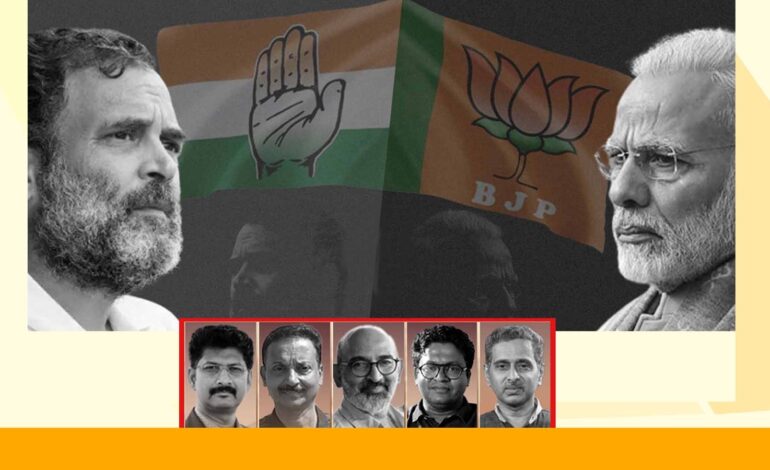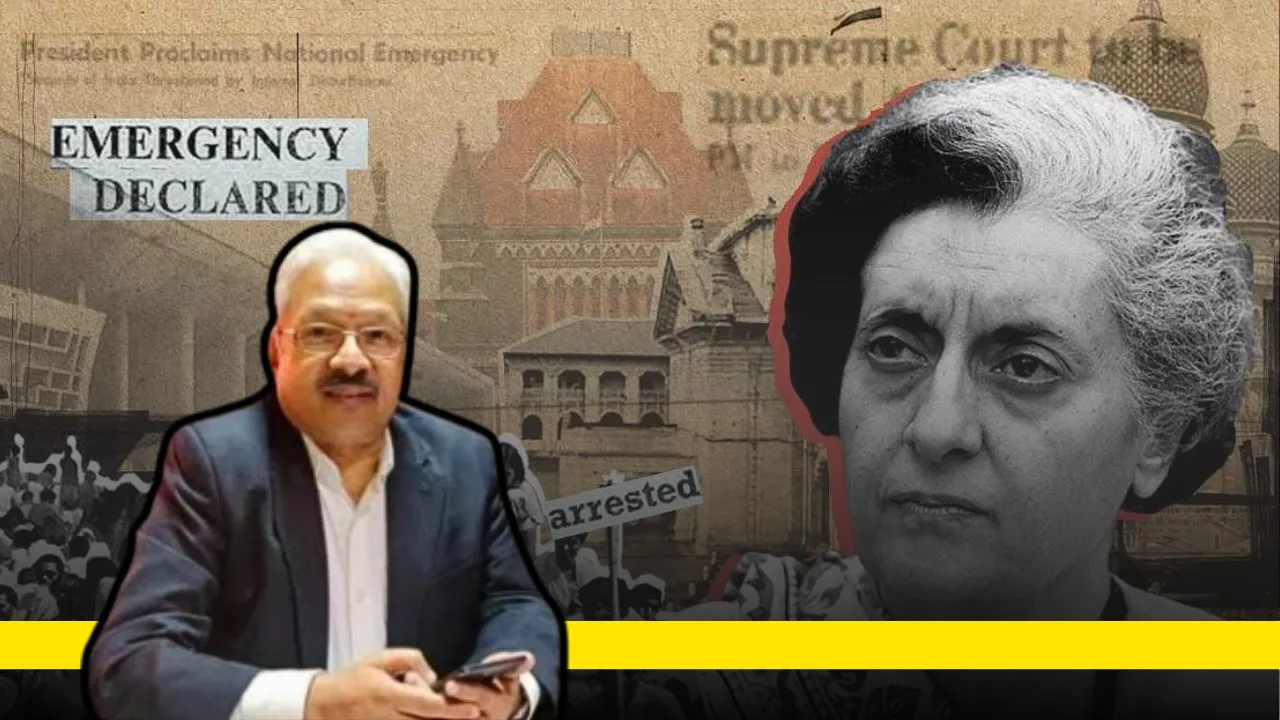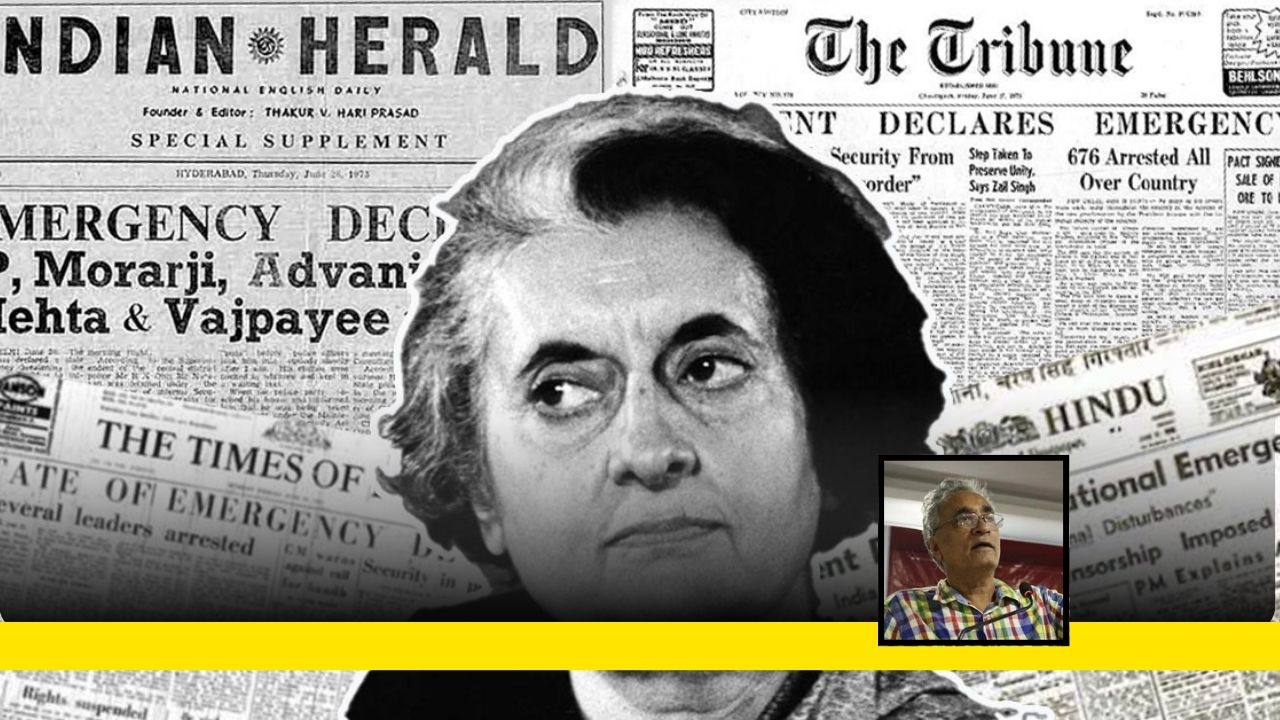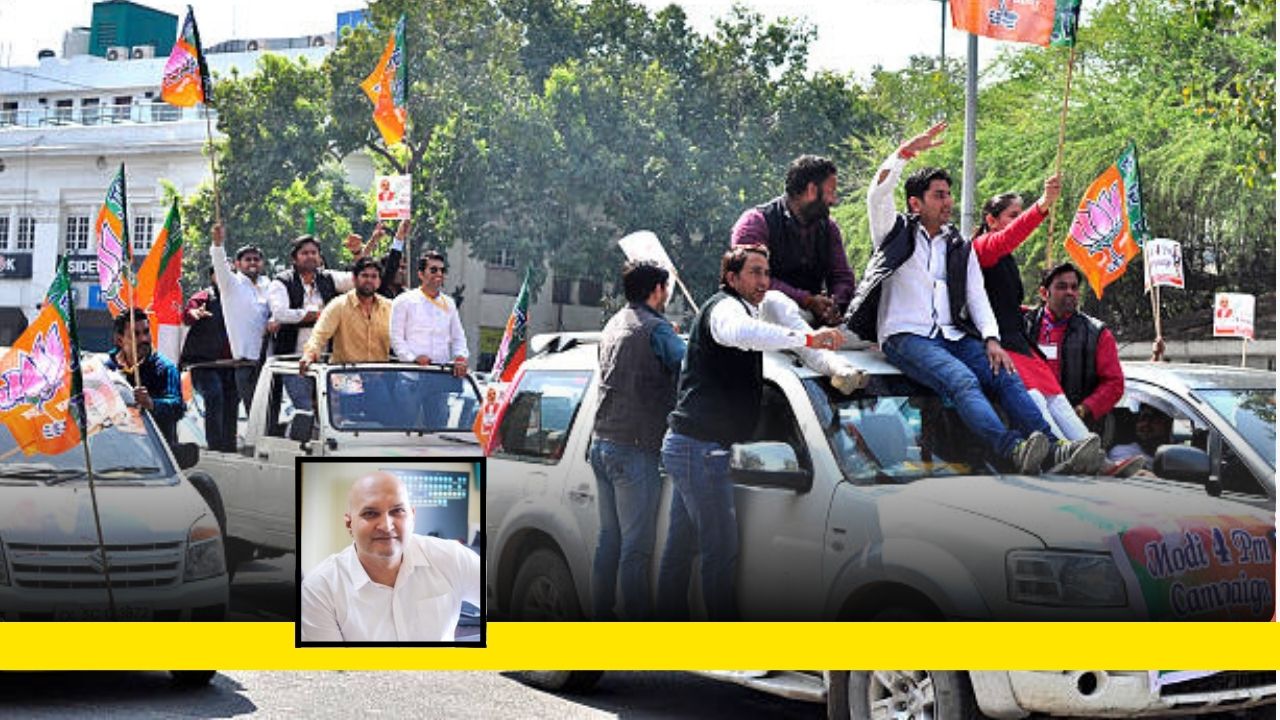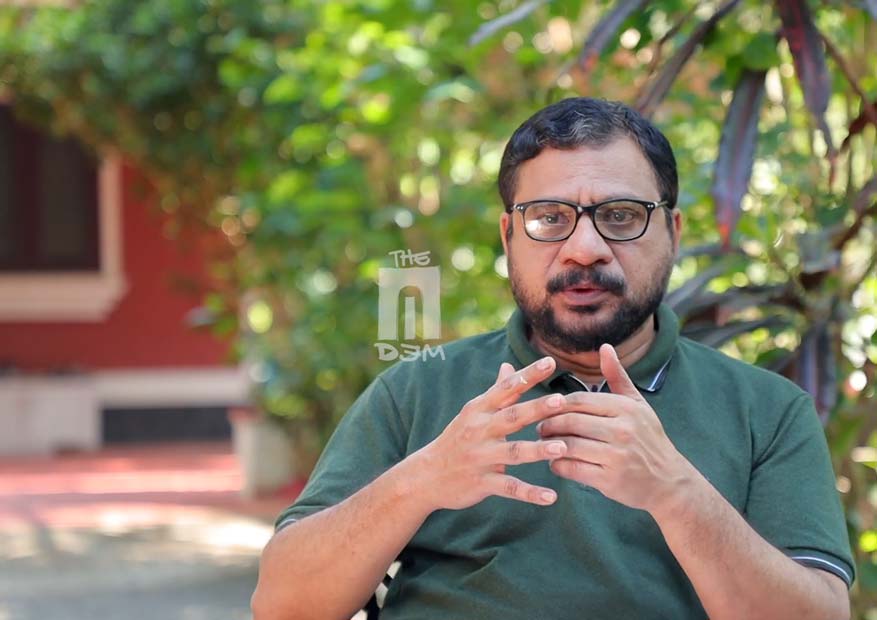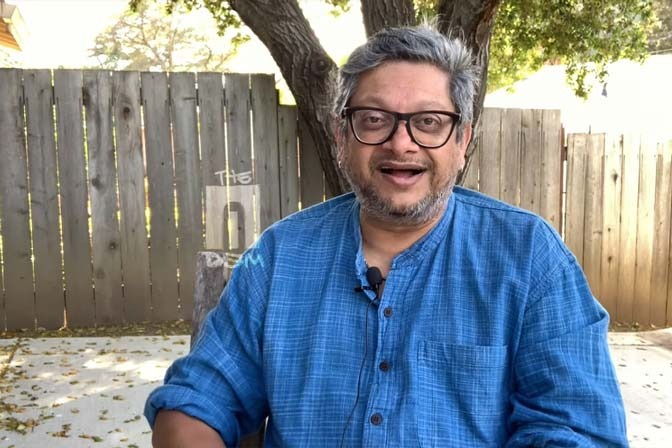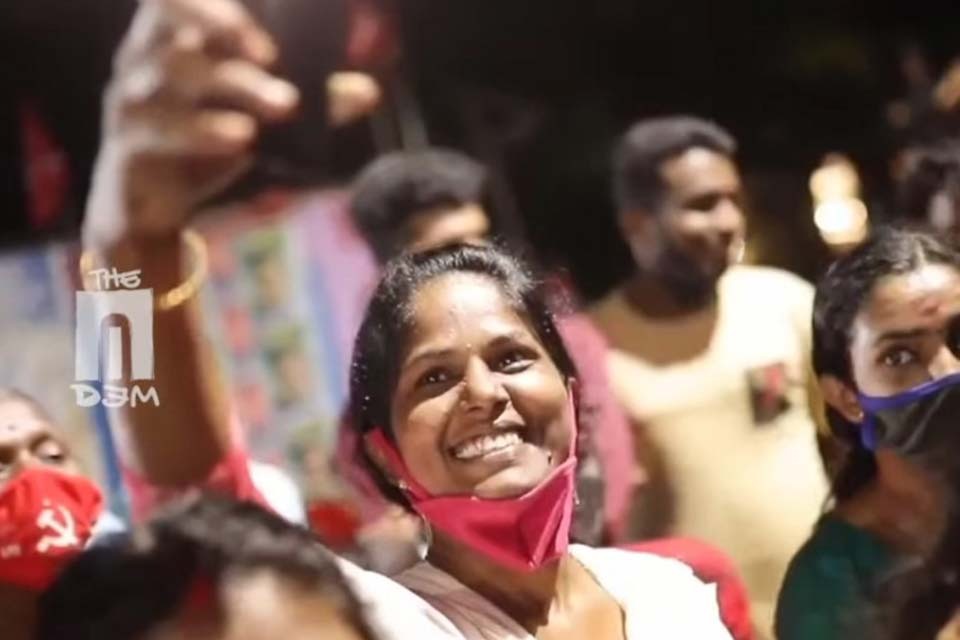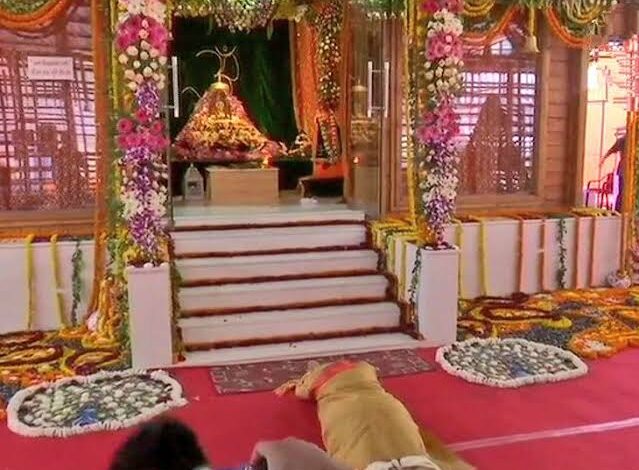
One of the main reasons widely cited for the Bharatiya Janata Party’s (BJP) shocking defeat in Ayodhya (Faizabad) is the very manner in which the Ram Temple was constructed and hurriedly consecrated literally trampling upon the lives, livelihoods and residences of hundreds of poor people. The AIDEM had, in its “Ear To The Ground” series, recorded the widespread misery inflicted, in this process, upon the people of the temple town way back in March 2023.
The AIDEM is reproducing this series in the context of the Lok Sabha election results. Read below.
The Missing ‘Ram Rajya’ in New Ayodhya (Part 1)
By Shivam Mishra
Arguably, the Hindu civilization is the oldest continuing civilization that has a kaleidoscopic range of deities, theologies, and philosophies or their interpretations. Even the hierarchical positions of the deities vary in the cultural cosmology of the several sects that have evolved over thousands of years.
Unlike the Abrahamic God, Hindu Gods do not like to sit on cloud nine to merely record the sins and good work of human beings; they descend on the earth in person to slay the evil and reward the pious. Since the incarnation of our gods is a recurring process and manifests in a new form every time, Hindus never run out of choices regarding the form of god they want to worship.
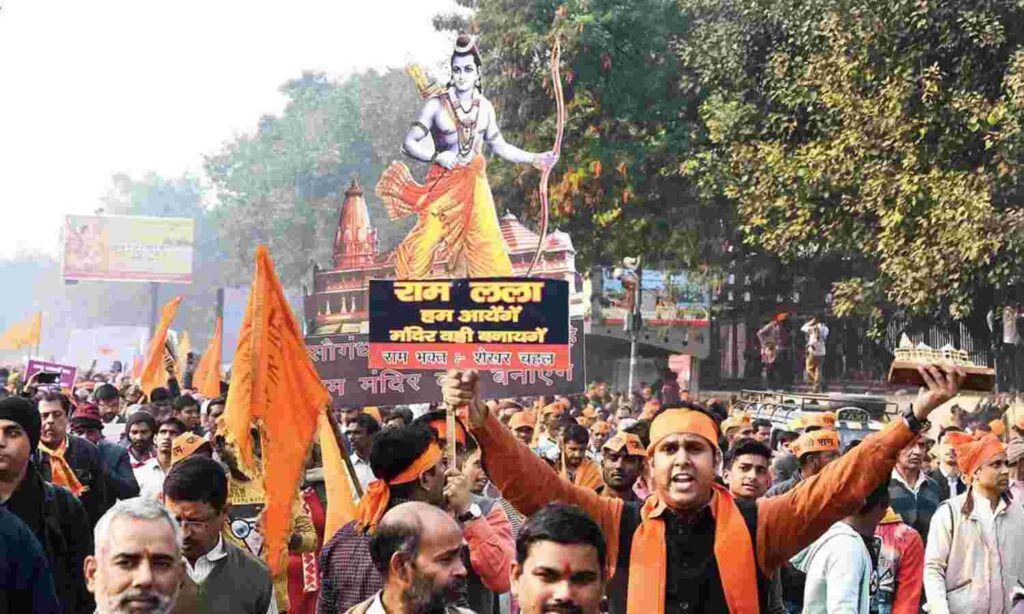
Since time immemorial, Hindus have been worshipping their ‘Ishtadeva’ (favourite God) choosing Him/Her from a vast range of deities. If there is one deity who can be called an eternal king of Hindu civilization, it is none other than Sri Rama.
रामो विग्रहवान् धर्मः साधुः सत्य पराक्रमः |
राजा सर्वस्य लोकस्य देवानाम् इव वासवः || ३-३७-१३||
“Rama is the embodiment of righteousness, he is an equable person with truthfulness as his valor, and as with Indra to all gods he is the king of the entire world. [3-37-13]. (third khand, 37th sarg, 13th shloka).
Ayodhya, the capital of Sri Rama, is one of the seven sacred ‘puris’ or cities mentioned in the Hindu Dharmashastras. Modern-day Ayodhya is a small sleepy town in the erstwhile district of Faizabad, which has been renamed ‘Ayodhya’ by the Yogi Adityanath-led Bharatiya Janata Party (BJP) government in Uttar Pradesh. During my early visits to the sacred space as a boy, I remember the sadhus with flowing beards and Vaishnava tilak thronging the mathas (abodes of sanyasis, and so on) and singing Ram Dhun (songs in praise Lord Ram). Rama Nam echoed in the atmosphere along with Ravindra Jain’s divine bhajans from the popular tele-serial Ramayana. Ayodhya town was dotted with mandirs and mahals dedicated to the other characters of Ramayana. To have the darshan of ‘Ram Lalla virajaman’, one had to pass through a maze of iron cages, only to be nudged by a constable who would keep repeating ‘Yahi hai Ram Janam Bhumi’ (this is the Ramjanma Bhumi) at regular intervals.
Thanks to my mother who belongs to a small village in the erstwhile Faizabad district, I grew up with stories of how villagers in the remote hinterland used to supply rations to passing packs of kar sevaks. Among these kar sevaks were believers who were convinced that the struggle of 498 years came to a desired end on the morning of November 9, 2019 when the Supreme Court’s verdict on the Babri Masjid title suit was delivered.
Kashi & Kyoto – the contrast
Be it Ayodhya or Kashi, our sacred sites had been badly neglected for too long. Renovation, conservation, and better facilities were much needed. The pool at the Ram ki Paidi of Ayodhya used to rot and open defecation on the ghats of rivers, be it Ganga ji or Sarayu ji, was a problem. In such a context, any move to ‘develop’ Kashi just like Kyoto, a heritage town in Japan, was welcome. Both Kashi and Kyoto have much in common when it comes to the intention and commitment to develop these cities, their administrators and the office-bearers do not have anything in common.
The geography of Kashi has been interpreted as a web of cosmograms. Much is written about it in ‘Puranic’ literature, and book after book has been written by foreign as well as Indian scholars. Pandit Kubernath Sukul sought to meticulously map the Shivlingas and deva-vigrah mentioned in Skanda Purana and relate them to what could be their modern-day addresses. Prof Rana Singh did a geomagnetic survey of the entire sacred space of Kashi.
With much pomp and grandeur, the Kashi Vishwanath Corridor was inaugurated but it was in contrast to the ways things are carried out in Kyoto. In Kyoto, the administration is committed to conserving the two thousand temples, monasteries, heritage buildings, and centuries-old trees. But the Kashi Vishwanath Corridor is a graveyard of more than hundreds of Pauranik (very ancient) temples, innumerable artefacts, heritage bhawans, ( Bhawan in Hindi means a building, normally a big building . A number of heritage bhawans in Varanasi and Ayodhya are buildings that house some temples, the sanyasis associated with them and they are also used by pilgrims during their visit to the towns) and 13 old trees, including the Akshayvat (a scared banyan tree). In Kyoto, the local community actively participates and the state acts as a guardian; in Kashi, local communities were demonized as ‘encroachers’ and the state acted like a ‘real estate agent’.
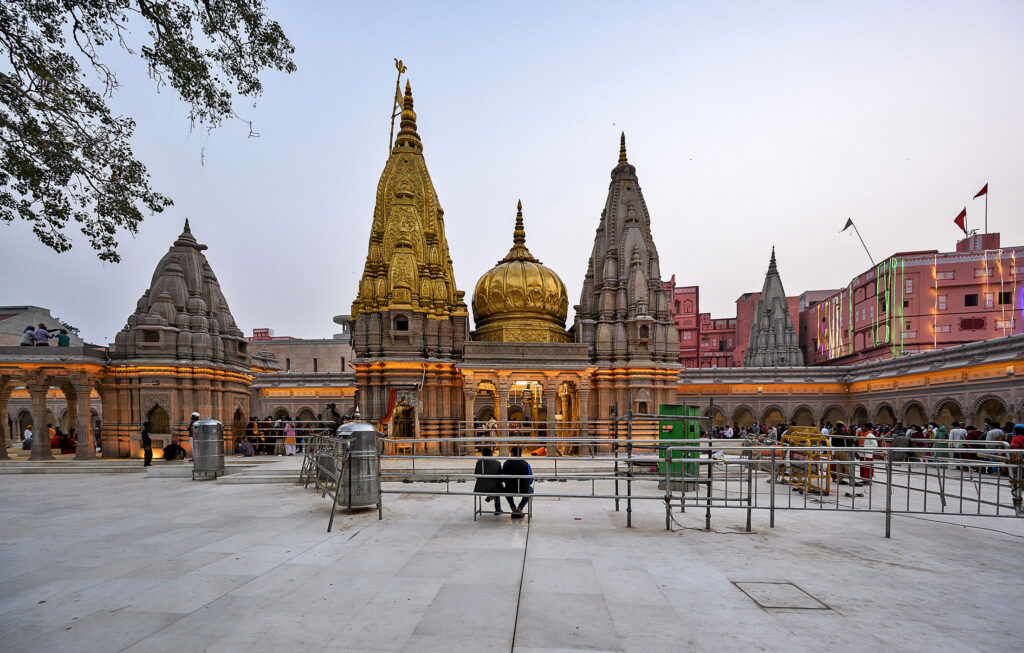
In terms of the puranic literature and the cosmograms related to them, dharohar (a rough Hindi translation of the word ‘heritage’) is referred to as a ‘spatial functional symbol that links locality and universality, consisting of four hierarchically interspersed layers. These are sthan (site), parikshetra (a defined territory), simant (border region) and brahmanda (cosmos). Hindu teerth is just not a piece of land but a reflection of cultural astrology. The shastras are very specific about the code of conduct and rituals that need to be followed on the sthan and within the parikshetra.
Pilgrimage and its associated routes (yatra path) are the most important parts of religious as well as civilizational heritage. The fire of civilization is preserved when the present generation treads the same route once taken by its ancestors, chants the same mantras, visits the same shrines enroute, and offers the same paraphernalia to the deities.
Importance of Ayodhya’s five pilgrimage routes
The Teerth Kshetra of Ayodhya has five pilgrimage routes as per the above perspective. These are the Chaurasi kroshi, Chaudah Kroshi, Panchkroshi, RamKot ki parikrama, and antahgrahi ki parikrama. All these routes are demarcated with shrines and temples that are described in ancient texts.
Chaurasikroshi (literally the path of 84) is considered to be the oldest route, and is believed to be associated with 148 sites and the number ‘84’ ingrained in the path’s name symbolises the 84 lakh species that a jeevaatma (soul) is supposed to evolve through before having a human body. A Chaurasikroshi Parikrama (a ritualistic perambulation of the path of 84) is performed for 36 days. The next one, the Chaudahkorshi (the path of 14) is linked to 36 sacred places and is believed to be associated with the life of Sri Ram. The Panchkroshi (the path of 5) refers to the core area that is associated with the 30 most sacred spaces related to the birth of Sri Ram and is completed within six hours.
The last two parikramas Ramkot ki parikrama and antargrahi, are not much in vogue. All these pilgrimage routes are concentric circles. The antargrahi is like the inner circle and Chaurasikroshi is the outer circle. There is a prominent stream of opinion among believers that the cultural rejuvenation and physical development of Ayodhya should be centered around these pilgrimage routes with the active participation of archeologists, conservationists, and local citizens.

But what is happening in Ayodhya now, including the rampant demolition of buildings over a distance of nearly 14 kilometers, is contrary to this perspective on the cultural rejuvenation and physical development of the town. Though the right wing loves to chant the mantra of ‘decolonizing Hindu minds’, its political leadership and the bureaucracy are not free from a colonial hangover. I shuddered when I heard that a particular ‘bureaucrat’ was sent to Ayodhya to execute the development project because he can be rightfully called the ‘mastermind’ behind the successful execution of a completely characterless and lifeless corridor in Varanasi.
Demolition of heritage
My nightmare turned real. Videos of devastation started pouring in, with citizens weeping over the loss of their properties and the meager compensation provided by the state. One of my acquaintances shared a video of the demolition of properties on the road that connects ‘Naya Ghat’ to ‘Hanuman Gadhi’. That route had one of the oldest heritage temples and Bhawan on its sides. Legally, the structures older than a century should be conserved under the expert guidance of the Archaeological Survey of India (ASI) or the Indian National Trust for Art and Heritage (INTACH) but these were being ruthlessly hammered down by contractors.
A local daily reported that portions of heritage bhawans such as Lakshman Qila, SiyaRam Kila, and Sadguru Sadan, and a few small temples on the Chaudahkroshi route would be demolished for widening the roads. Having witnessed firsthand the barbarism of extremely arrogant and cultureless officials in Varanasi, these demolitions did not shock me much.
On a chilly noon on December 9, 2022, I took a bus to Ayodhya from Lucknow. On reaching Ayodhya, the first thing that caught my attention was a giant veena installed at the center of a road. My friend who came to receive me told me that the son of the erstwhile Raja was a huge fan of Lata Mangeshkar and even wrote a book on her. The veena was installed in her honor and inaugurated by none other than Narendra Modi.
As we started to walk from Naya Ghat to Birla Dharmshala, debris was piled up on the sides of the road and shopkeepers were trying to rearrange their makeshift shops. Dust filled the atmosphere and smog made the weather more depressing. Something did not appear right, something was missing.
Near Gandhi Ashram, lakhori bricks peeked out of the partially demolished arches of Ram Janki Shukla Mandir like the broken jaw of a poor man who had been sucker-punched for no reason. It was a double-story temple built in 1872 by a Brahmin family from Barabanki. The portion of the temple used for Satsang (spiritual discourse or gathering), known as Jagmohan, was torn down because it was obstructing ‘development’. The sanctum remained untouched.
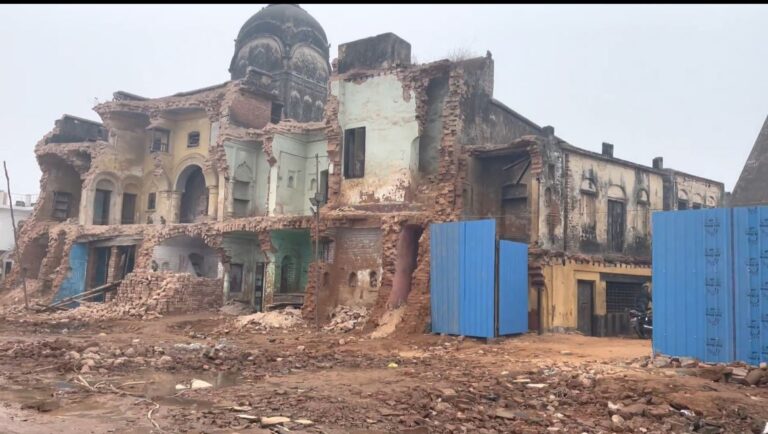
Next to the Shukla Temple stood the ‘Lal Mohariya Chah Bhaiyya Dharsmshala’, with a temple inside the premises. It was owned by a family of the ‘teerth purohit’ of the erstwhile Royals of Nepal. The owner Devendra Nath Mishra was satisfied with the compensation and felt relieved that his temple remained untouched. But he was confused as to why the state was erasing the heritage structure. He showed me the image of his ornate and intricately carved boundary wall that was demolished and said, ‘foreigners are coming to see the indigenous architecture’ and not the grand doors in modern designs.
I was intrigued to see a wide space adjacent to the other side of the Shukla Mandir. Magnificent twin temples that once stood there are now part of history. Anyone who has not seen the old images of these temples cannot even imagine their majesty. These were the first temples to be bulldozed in December 2022. I reached one of the most aesthetic ‘Birla’ Dharamshala whose boundary walls were demolished for widening the road. Since there is a big garden and a temple in the front portion, the dharmshala escaped demolition.

Shivam Mishra is Hindu civilisational nationalist who believes in the ideals of Sri Aurobindo and Sita Ram Goel.
Continue reading the 3-part Series here: Part 02 & Part 03


